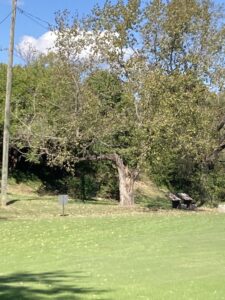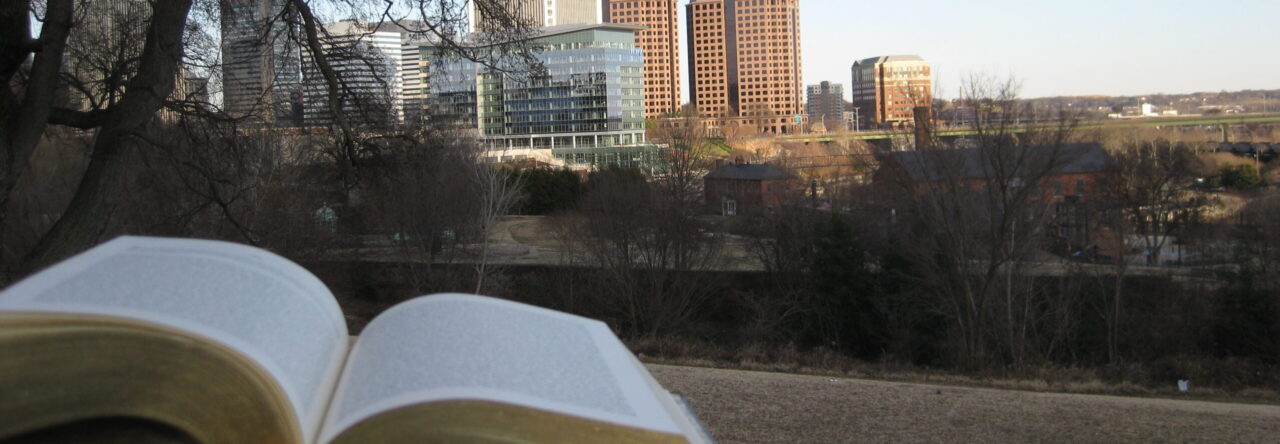One thing I noticed about how the author tells her story is the language she uses. It’s simple and understandable which, in turn, makes her story more digestible. A complex story such as the author’s could be difficult to convey entirely to readers but through the language she used, it’s easy to follow. The language in combination with the pictures tells such a rich story in a simplistic way.
Month: October 2023 Page 3 of 11
I really enjoy reading comics in general especially the one of Persepolis. I really like the way the author introduces ideas that can be approached by any audience from teenagers to old people. Their language is simplistic, yet powerful, the black-and-white use of colors highlights the contrast and creates a dynamic image throughout the whole book. I find the language really strong and emotional because it is simplistic and innocent and that’s what a reader is expecting from a 10-year-old girl to write. However, within this simplicity really powerful and complex ideas like War religion identity and innocence are conveyed throughout the first four chapters there is a combination of a first and third person which is a really nice balance between giving context and informing the reader to have a better understanding but then use of the first person to give different inside from every Iranian family and specifically from a 10-year-old girl that is experiencing everything in Iran overall it is a really unique and powerful way of communicating ideas that I would like to see being used in more media.
After talking about the importance of scheduling an advising meeting and talking about the logistics of the next semester, we started conversations regarding the trip we had on Thursday. Then we took some time to read each others’ prep notes and analyzed the writings on the exhibits. According to eugenics’ beliefs, the white race was considered supreme leading to severe discrimination against the black race or other minorities. An interesting notice was rewriting Africa with different characters a microaggression that connects even to modern societies within Richmond. Looking forward to making change, the memorial is a symbol incentivizing locals and or even people who drive by to know about Richmond’s Unhealed history. More specifically, the planting of new trees next to the memorials is a way of reclaiming history and giving hope for change and healing. Except for these, we analyzed how the concept of slavery is approached in Texas and other states, where many topics are avoided or perceived through really superficially not trying to face reality and acknowledge history. That brings us to the general conclusion regarding storytelling; the ways many stories are being not heard or not even spoken even though they carry significance. An example of that would be the location of the tavern being next to the place where slaves would be tortured highlighting the views of white superiority. How were kids grown up in such an environment and what are the effects of such an abusive environment on the next generations? We continued analyzing eugenics by pointing out examples of measuring scalps or analyzing food consumption statistics to prove the superiority and inferiority of races based on pseudoscientific beliefs and false claims.
In the final part of the class, we went through the assignment of the mid-term portfolio, emphasizing the purpose of the assignment and the way students should approach it by analyzing the rubric.
Do these two learning moments have to happen in the assigned writings in this class?
For the specific personal story, does it have to come from class materials?
Is there any requirements of how formal the essay should be?
Can the quotes being used come from sources outside of the blog/prep notes? Can I use quotes from my reflections on a personal document?
- How long should the papers be? My draft is 3 pages but I don’t know if I need more or less.
- Do the papers need to be in Chicago style? Or can they be in MLA format?
One question I have about the midterm is how formal the writing is expected to be. And how long is it expected that each of these essays are? and for the second essay I am not sure what is meant by “my society” in the second essay. And for that extra credit point should I continue it in the format of that second essay or make a separate page or paper for that?
One of the first things I wondered was how long to make each of the essays. Is there an emphasis on one over the other, or should one be longer? I’m also not quite sure how to quote myself, or what the thesis should look like for the first essay. I’m not sure what my claim should be – is the idea that I’m arguing that I’ve become a better writer? And if so, is that looking at syntax or feel? Am I picking out early rougher writing and presenting more polished recent writing to show that I’ve improved? And again, if so, should I show improvement in the style of my writing or the focus or something else? Am I looking for a way to show how I improved my writing skills, or should I find a moment where writing helped me learn something about the world or myself?
Also, how should we use first person/third person? Since we’re quoting ourselves, are we allowed to use “I?” And how should we interact with that? Should it be more of a rhetorical analysis or a self-reflection?
Before class, I had already done some research on the burial ground for the annotated bibliography assignment, so I knew it would not look like a traditional cemetery due to the decades of development and destruction that the land had experienced. I didn’t quite know what to expect, since my research had stopped before the land was completely recovered for the purpose of historical preservation.

During class, I took a picture of the burial ground as an expanse of land. I wrote on my index card that the telephone poles sticking out of the grass reminded me of the pictures we see sometimes of floods, where water covers everything and the telephone poles are the only signs that people had existed at all. I wonder if that could be connected to the burial ground as well – we can’t physically see the evidence of what happened in the space because it was covered up, but there’s a presence there that almost alludes to it, in a way. I’ll quote myself from Thursday: “In the absence of the physical representation of the structure (the lack of a traditional cemetery landscape), there was a ghostly type of presence. A ‘presence’ in and because of the absence.” People can be remarkably perceptive – we can notice the slightest shift in physical conditions, but we also pick up on intuitive or social changes. I think the space has enough of an ethereal (ghostly? spectral?) presence to affect even someone who visited without knowing its history.
The most intriguing part of this field trip was seeing the hanging tree from Lumpkins Jail. In history class, you hear about hangings and cartoons of them in textbooks. Although saddening, we’re either desensitized to it or just don’t take into perspective how terrible this act of execution really was. The fact that I was standing right next to a tree responsible for hundreds of deaths was very gut wrenching. It’s even worse to think about when you consider hanging being known as the most cruel/painful form of death at the time it was done. Going on this field trip and seeing the hanging tree connects straight back to Campbells book, Richmond Unhealed History. Everywhere you go, even if its just passing a tree can tell an entire story about the lives of those oppressed, the oppressors and the history of the city itself.

